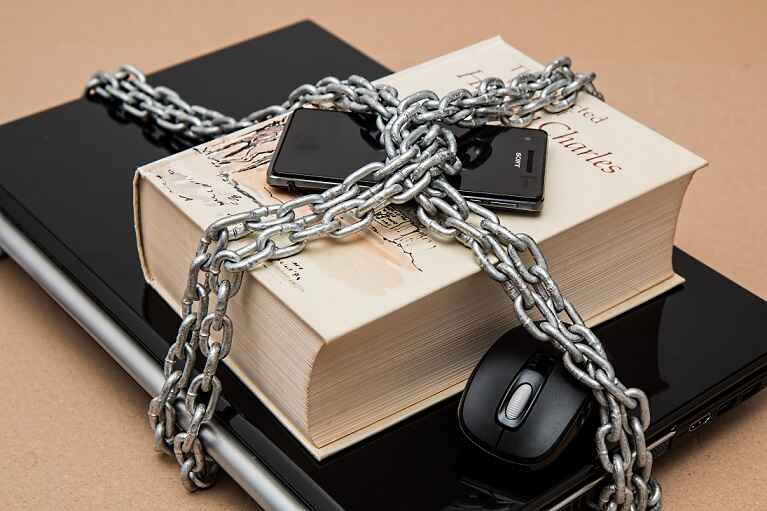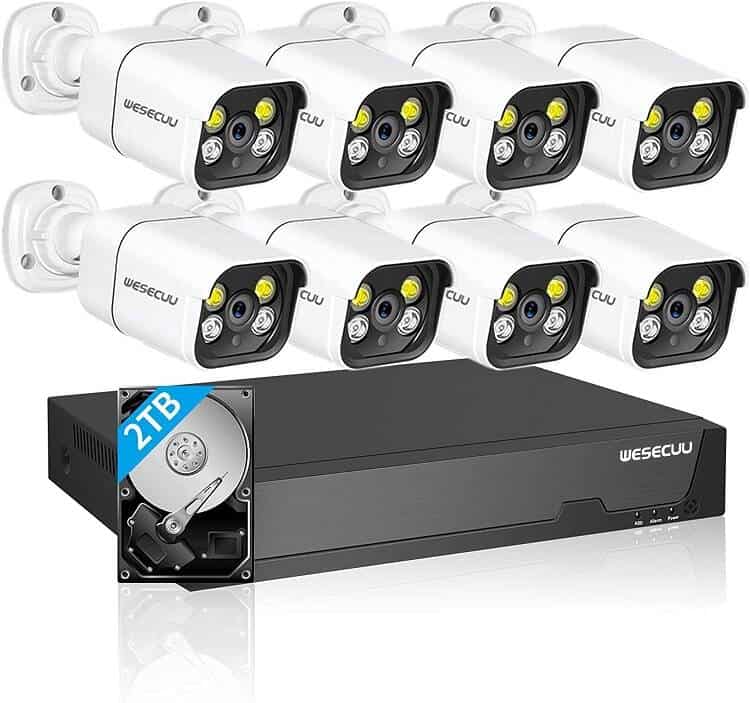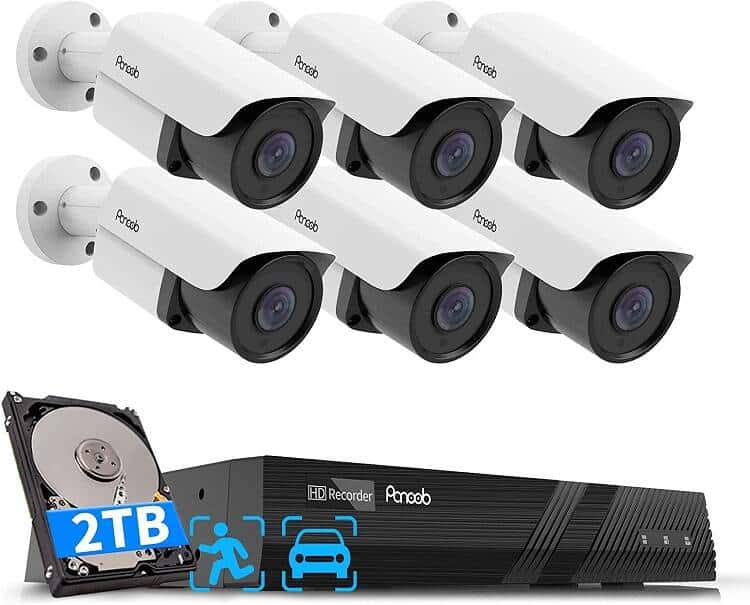How to Prevent WiFi Jamming
WiFi jamming refers to the deliberate interference of wireless networks, causing disruptions or complete denial of service. It involves overpowering or overwhelming the target network with a high amount of interference, resulting in connectivity issues for legitimate users.
Jamming attacks can be carried out using various methods, which we will explore in the subsequent sections.

Common Methods of WiFi Jamming
- Deauthentication Attacks: An attacker sends deauthentication packets to the target network, forcing connected devices to disconnect and disrupting normal operations.
- Flooding Attacks: By flooding the network with an excessive amount of data packets, attackers can overwhelm the network’s capacity, rendering it unavailable to legitimate users.
- Signal Interference: Attackers can introduce powerful interference signals on the same frequency as the target network, causing disruption and making it challenging for devices to maintain a stable connection.
- Selective Jamming: This method targets specific wireless channels or frequency ranges, disrupting communication within those frequencies while leaving others unaffected.
Recognizing the Signs of WiFi Jamming
It’s crucial to be able to identify the signs of WiFi jamming to take timely action. Some common indicators include:
- Frequent disconnections or loss of connectivity
- Slow network performance despite having a strong signal
- Inability to detect or connect to the WiFi network
- Unexpected network outages or intermittent disruptions
If you notice any of these signs, it’s essential to investigate further and implement preventive measures.
Strengthening Network Security
To prevent WiFi jamming attacks, it’s essential to enhance the security of your wireless network. Consider implementing the following measures:
Encrypting Your WiFi Network
Enabling encryption protocols such as WPA2 (Wi-Fi Protected Access 2) or WPA3 ensures that the data transmitted over the network remains secure and inaccessible to unauthorized individuals.
Using Strong Passwords
Set a strong and unique password for your WiFi network. Avoid common passwords or easily guessable phrases. A combination of uppercase and lowercase letters, numbers, and special characters provides an added layer of security.
Changing Default Network Settings
Modifying default network settings, such as the network name (SSID) and administrator credentials, prevents attackers from exploiting known vulnerabilities.
Enabling MAC Address Filtering
By enabling MAC (Media Access Control) address filtering, you can restrict network access to authorized devices only. This ensures that only devices with approved MAC addresses can connect to your network.
Disabling Remote Management
Disable remote management capabilities on your wireless router or access point. This prevents unauthorized individuals from accessing or modifying your network settings remotely.
Regular Firmware Updates
Keep your network devices up to date by installing the latest firmware updates provided by the manufacturer. Firmware updates often include security patches and enhancements to protect against emerging threats.

Deploying Wireless Intrusion Detection Systems (WIDS)
Wireless Intrusion Detection Systems (WIDS) are designed to monitor and detect unauthorized or malicious activities within your WiFi network. WIDS solutions can help identify and mitigate WiFi jamming attacks by alerting network administrators in real-time.
Utilizing Wireless Access Point (WAP) Placement Strategies
Proper placement of wireless access points is crucial to maximize coverage and minimize interference. Consider the following strategies:
Avoiding Obstructions
Place access points away from physical obstructions such as walls, large objects, or metal surfaces that can hinder signal propagation.
Securing Physical Access Points
Ensure that access points are physically secure and not easily accessible to unauthorized individuals. This prevents tampering or interference with the devices.
Optimizing Signal Strength
Adjust the transmit power of access points to provide adequate coverage without excessive signal leakage beyond the required areas. This reduces the likelihood of signal interference.
Employing Frequency Hopping Spread Spectrum (FHSS) or Dynamic Frequency Selection (DFS)
Frequency hopping spread spectrum (FHSS) and dynamic frequency selection (DFS) are techniques that allow WiFi devices to automatically switch between different frequencies to avoid interference. Implementing these methods can mitigate the impact of WiFi jamming attacks.
Conducting WiFi Site Surveys
Performing WiFi site surveys helps identify potential sources of interference and optimize network performance. Consider the following steps:
Identifying Interference Sources
Scan the surrounding area for potential sources of interference, such as other WiFi networks, cordless phones, microwave ovens, or Bluetooth devices. Mitigate the impact of these sources by selecting channels with minimal interference.
Selecting Optimal Channels
Use WiFi scanning tools to identify the least congested channels and configure your access points accordingly. This reduces the chances of interference and improves overall network performance.
Using WiFi Signal Jammers (For Authorized Personnel Only)
WiFi signal jammers are devices that can be used to neutralize WiFi signals within a specific range. However, it’s important to note that using WiFi signal jammers may be illegal in many jurisdictions, except for specific authorized applications. Seek legal advice and obtain proper authorization before considering the use of WiFi signal jammers.
Reporting WiFi Jamming Incidents
If you encounter WiFi jamming attacks or suspect malicious activity, report the incidents to your network administrator or local authorities. Timely reporting can help initiate investigations and prevent further disruptions.
Legal Implications of WiFi Jamming
Engaging in WiFi jamming activities is illegal in most countries. Individuals involved in such activities can face severe legal consequences, including fines and imprisonment. It’s essential to understand the legal implications and refrain from any unauthorized or malicious activities.
Conclusion
Protecting your WiFi network from jamming attacks is paramount to ensure uninterrupted connectivity and maintain the security of your data. By following the preventive measures outlined in this article, you can significantly reduce the risk of falling victim to WiFi jamming attacks. Remember to implement strong encryption, use secure passwords, and regularly update your network firmware. Deploying wireless intrusion detection systems, optimizing access point placement, and conducting WiFi site surveys are also effective strategies to enhance network resilience.
It’s crucial to stay vigilant and be aware of the signs of WiFi jamming. If you suspect any interference or experience unusual disruptions, take immediate action to investigate and mitigate the issue. By promptly reporting WiFi jamming incidents to the appropriate authorities, you contribute to maintaining a safe and secure wireless environment for everyone.
FAQs (Frequently Asked Questions)
Can WiFi jamming be done by anyone?
WiFi jamming is an illegal activity in most jurisdictions. Engaging in WiFi jamming without proper authorization is punishable by law. It’s important to respect the rights and privacy of others by refraining from any malicious activities.
Is there a foolproof method to prevent WiFi jamming?
While there is no guaranteed method to prevent WiFi jamming entirely, implementing strong security measures and following best practices significantly reduces the risk. By securing your network, monitoring for suspicious activities, and staying informed about emerging threats, you can minimize the impact of WiFi jamming attacks.
Can WiFi jamming affect neighboring networks?
Yes, WiFi jamming attacks can affect neighboring networks operating on the same frequency or in close proximity. Strong interference signals can disrupt or degrade the performance of nearby WiFi networks, causing connectivity issues for legitimate users.
Are WiFi signal jammers legal?
In most countries, the use of WiFi signal jammers is illegal, except for authorized personnel in specific applications such as law enforcement or military operations. It’s important to consult legal experts and obtain proper authorization before considering the use of WiFi signal jammers.
What should I do if I suspect WiFi jamming in my area?
If you suspect WiFi jamming in your area, report the incident to your network administrator or local authorities. Provide them with as much information as possible, including the time, location, and any observed disruptions. Timely reporting helps in initiating investigations and taking appropriate action to mitigate the impact.
Disclaimer
Certain content that appears on this site comes from Amazon. As an Amazon Associate we earn from qualifying purchases. Read full Disclaimer Here!






